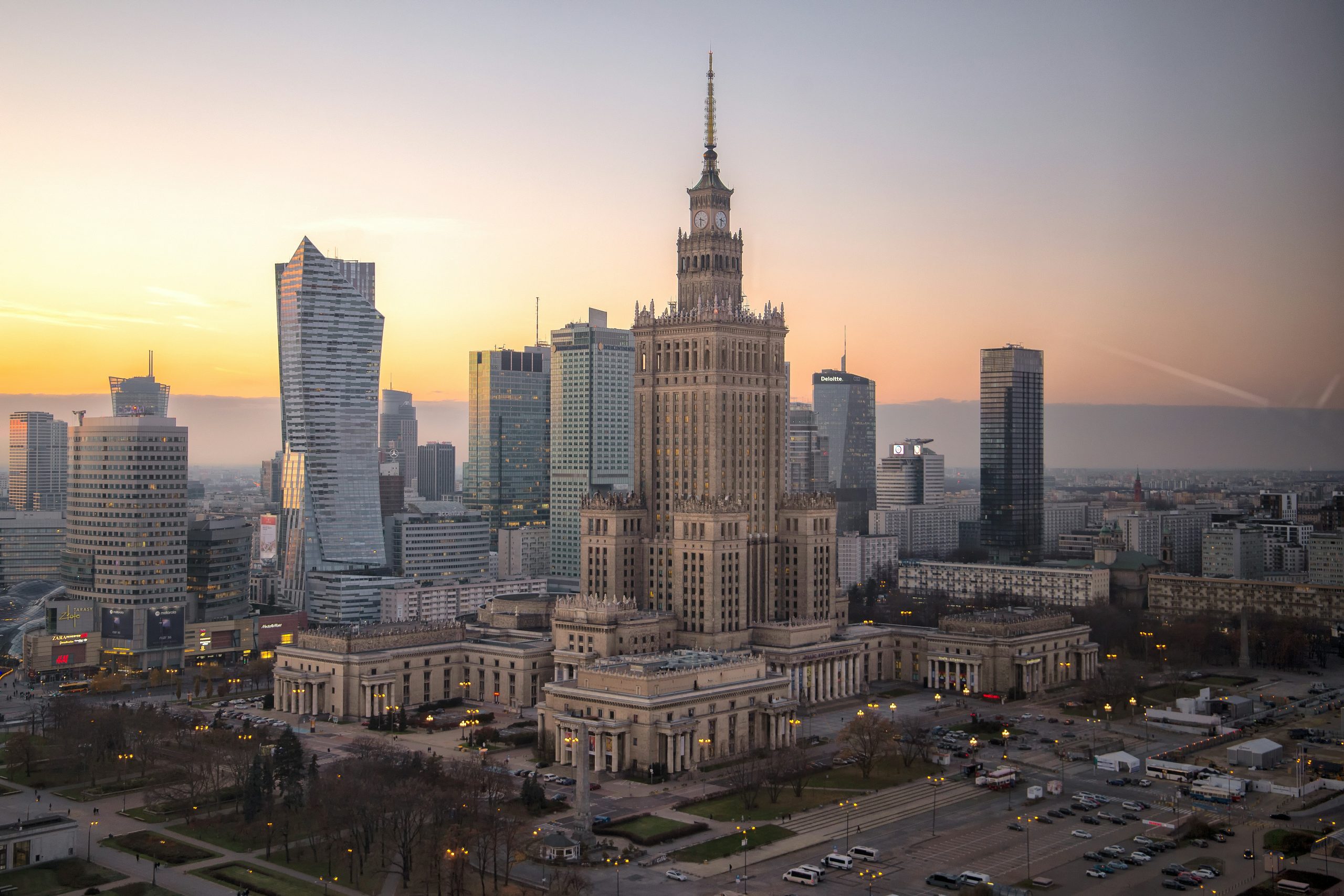Discover the rich history of Polish immigrants and learn how the Polish diaspora worldwide has built strong centers of Polish culture. Find out how numerous and influential Polish communities are on different continents.
The Polish diaspora is an integral part of Poland’s emigration history. Over the centuries, millions of Poles have left their homeland, settling and establishing Polish communities on every continent. These Polish immigrants, both voluntary and forced, have created one of the largest national diasporas, with visible influences in the culture, economy, and politics of many countries.
Today, approximately 20 million people of Polish ancestry live around the globe, and their history remains inseparably tied to Polish identity, traditions, and values.
Emigration from Poland has always been closely linked to the country’s historical events. Most Polish immigrants left their homeland in response to economic, political, and social challenges throughout history.
It is essential to recognize the different waves of emigration that have occurred from the 19th century to the present day. Each of these waves has contributed to the growth and development of the Polish diaspora.
In this article, we will explore the largest Polish communities in countries like the United States, Canada, the United Kingdom, Australia, and South American nations.
Key Takeaways
|
Early Waves of Polish Immigrants
One of the first significant waves of Polish emigration was the so-called “Great Emigration,” which took place between 1831 and 1870.
This wave was a response to turbulent events, such as national uprisings aimed at restoring the country’s freedom and independence. Many members of Poland’s intelligentsia, nobility, and social elites sought new opportunities and lives in Western European countries like France, Belgium, and Switzerland. It is estimated that about 30,000 Poles settled abroad during this period, searching for peace and better prospects.
In the following years, particularly after the emancipation of peasants in 1864, more individuals from various social groups gained the opportunity to emigrate. By the time of World War I, approximately 3.5 million people had emigrated from Poland, primarily peasants and laborers.
This wave significantly influenced the development of Polish immigrant communities abroad. These communities continue to preserve the traditions and language of their ancestors, building bridges between their homeland and their new homes.
Learn more about emigration and Poland’s rich history in the article Polish History in a Nutshell.
Polish Americans in the United States
The United States is home to one of the largest Polish diasporas in the world. The first Poles arrived in America as early as 1608, alongside other European settlers.
Notable figures like Generals Kazimierz Pułaski and Tadeusz Kościuszko played significant roles in the American Revolutionary War. Their contributions are still celebrated today, and their names are widely recognized across the country.
Polish emigration to America occurred in three major waves:
- 1870–1914: The number of Polish immigrants grew from around 50,000 to over 2 million. Many came in search of work, often taking jobs in steel mills, mines, and heavy industry factories. This often saw the establishment of many Polish American communities that can still be found today.
- Post-World War II: Difficult economic conditions and limited agricultural opportunities after the war led to a second wave of migration. Many wartime refugees chose to remain abroad and settled permanently.
- Post-1989: Political changes following the fall of the communist regime in Poland and the Soviet Union opened up new opportunities for work abroad. It is estimated that during the 1980s, about 1.3 million Poles emigrated, primarily to Germany and the United States.
Today, around the United States is home to about 8 million Polish Americans, with approximately 600,000 still speaking the Polish language.
Polish heritage is especially prominent in cities like Chicago, which has become one of the most important centers of the Polish diaspora worldwide.
Learn more about the history of Polish immigration to America in the article Polish Immigration to America.
Poles in Canada
Polish emigration to Canada has a long history, dating back to 1752. However, the largest waves of migration occurred from the 19th century onwards, each period marked by unique characteristics:
- 1858–1901: The first migrants came from the Kashubian region and settled in Ontario. They fled German and Prussian repression.
- 1921–1931: After World War I, approximately 130,000 Poles emigrated, primarily farmers who settled in Canada’s western provinces such as Alberta, Manitoba, and Saskatchewan.
- 1945–1956: Following World War II, a mix of former soldiers, Nazi camp survivors, and political refugees arrived in Canada. These Polish immigrants predominantly settled in Ontario, forming strong communities there.
- 1957–1979: Subsequent waves of migration stemmed from the desire to escape communist rule in Poland.
- 1981–1993: Due to economic difficulties in Poland, many Poles sought work in Canada and other countries.
Today, over a million people of Polish ancestry live in Canada, with the largest communities in Ontario, Manitoba, and Alberta.
Canada has become home to generations of Poles who continue to cherish their roots and traditions.
Learn more about the history of Polish immigration to Canada in the article Polish Immigration to Canada.
Poles in the United Kingdom
The United Kingdom has also become a significant destination for Polish emigrants, with their arrival divided into three main periods:
- 1831–1863: After the failed uprisings of 1831 and 1863, many members of the Polish elite fled to neighboring countries, including the UK.
- 1939–1955: During the Second World War, around a quarter of a million Poles arrived in the UK, mainly soldiers, pilots, and their families, as well as demobilized individuals after the war. The 1947 Polish Resettlement Act allowed many Poles to remain permanently, and their community became an integral part of British society.
- 2004–2014: Following Poland’s accession to the European Union, Poles gained the freedom to move to the UK. By 2014, it was estimated that around half a million Poles lived in the country.
Today, approximately 700,000 Poles reside in the United Kingdom, and the Polish diaspora continues to play an important role in the country’s social and cultural life.
Learn more about the history of Polish immigration to the UK in the article Polish Immigration to the UK.
Poles in Australia
In Australia, Polish immigration began in the 19th century, most Polish immigrants arrived after World War II.
Between 1947 and 1954, the number of Poles in Australia grew from about 7,000 to over 50,000. Most of these immigrants were soldiers, former prisoners of Nazi camps, and individuals fleeing political persecution. At the time, the Australian government ran an immigration program that facilitated Polish settlement on the continent.
Today, around 200,000 people of Polish descent live in Australia. Despite being geographically distant from Europe, the Polish community in Australia actively preserves the Polish language, traditions and culture. In cities like Sydney, Melbourne, and Adelaide, Polish festivals, cultural organizations, and language schools help maintain national identity across generations.
The Polish diaspora in Australia also plays an important role in building bridges between Poland and Australia, promoting Polish culture among the Australian public.
Learn more about the history of Polish immigration to Australia in the article Polish Immigration to Australia.
Poles in South America
South America, particularly Brazil and Argentina, became home to many Polish emigrants who arrived in the 19th and early 20th centuries. Poles sought better living conditions, fleeing poverty and economic hardship in Europe. The first waves of migration were primarily composed of farmers who settled on new lands in Brazil and Argentina, continuing their agricultural traditions.
By 1914, approximately 115,000 Poles had emigrated to Brazil. Today, their descendants form one of the largest Polish diasporas globally, numbering around 3 million people. The Polish community in Brazil, concentrated mainly in the states of Paraná, Santa Catarina, and Rio Grande do Sul, plays a significant role in the country’s social and economic life. Brazilian Poles continue to uphold Polish traditions, organizing annual festivals, preserving the language, and passing Polish values to future generations.
In Argentina, where about 140,000 Poles arrived between 1914 and 1939, the Polish diaspora is equally active. Numerous Polish organizations, schools, and associations in Buenos Aires help maintain strong ties to Poland. Despite the challenges they faced upon arriving on a new continent, Poles in South America succeeded in building not just Polish neighborhoods but strong, integrated communities that continue to play vital roles in their respective countries.
Poland’s diaspora, numbering around 20 million people, is one of the largest and most dynamic emigration communities in the world. Poles and their descendants, no matter where they settled, play an essential role in the social and cultural life of their new homelands. At the same time, they remain deeply connected to their Polish heritage, preserving traditions, language, and values passed down through generations. Around the world, you can find such a Polish neighborhood, where Poles continue the traditions and culture of their ancestor’s native country.
Summary
The history of Polish emigration is a fascinating story of people who left their homeland in search of new opportunities but maintained their roots by building strong Polish communities worldwide.
Thanks to the resilience and determination of Poles, the diaspora has flourished on various continents, making significant contributions to the culture and economies of the countries they settled in.
Today, approximately 20 million people of Polish descent continue to cherish their traditions, language, and culture.
From the Polish American communities of the United States to the Polish neighborhoods found in Canada, the United Kingdom, South America, and Australia, Poles have had a profound impact on the development of their new homelands. They established Polish schools, churches, and organizations that remain pillars of Polish identity abroad.
If you have Polish roots, now is the perfect time to uncover your family’s history and connect more deeply with your heritage. Confirming Polish citizenship by descent is a step that can open new opportunities for you – the right to live, work, and travel across the European Union.







